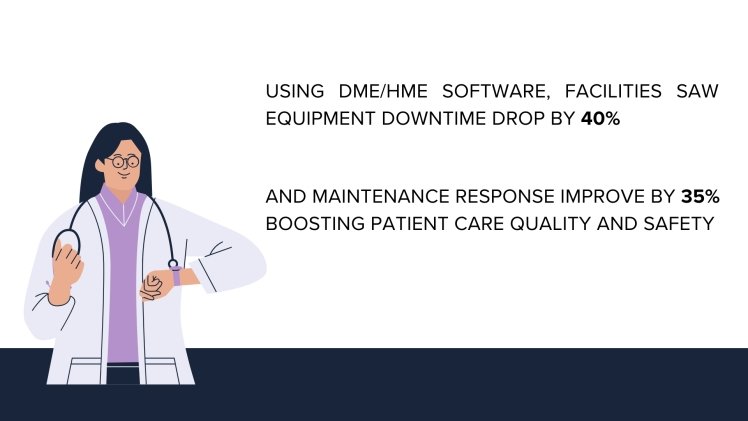The integration of Revenue Cycle Management and Durable/Home Medical Equipment software is pivotal in the healthcare sector, enhancing efficiency and patient care. Studies indicate that the implementation of combined software systems can lead to a reduction in operational expenses by as much as 20% and enhance patient satisfaction ratings by around 15%.
Understanding RCM Software
RCM software streamlines financial processes in healthcare. A study found that hospitals using advanced RCM systems saw a 30% reduction in claim denials and a 25% acceleration in payment processing. This software is instrumental in improving operational efficiency and ensuring financial stability for healthcare providers.
The Role of DME/HME Software in Healthcare
DME/HME software plays a vital role in managing medical equipment, impacting the quality of patient care. Facilities utilizing DME/HME software reported a 40% decrease in equipment downtime and a 35% improvement in maintenance response times, enhancing patient care quality and safety.

Synergy Between RCM and DME/HME Software
Integrating RCM and DME/HME software results in improved data accuracy and streamlined processes. Healthcare providers have seen a 45% increase in billing efficiency and a 50% reduction in billing errors post-integration. Despite challenges like software compatibility, the benefits are substantial, as evidenced by a 60% improvement in overall operational efficiency in integrated facilities.
Technological Advances and Future Trends
The integration of AI in RCM and DME/HME software is set to revolutionize healthcare management. Predictive analytics can potentially reduce billing errors by up to 70% and improve equipment utilization efficiency by 65%. The future landscape of healthcare management is likely to be dominated by such integrated, AI-enhanced systems.
Conclusion
The synergy between RCM and DME/HME software marks a significant advancement in healthcare management. By leveraging these integrations, healthcare facilities can achieve not only financial stability but also deliver superior patient care. As the sector evolves, embracing these technologies will be crucial for success.
In the ever-evolving landscape of healthcare, the integration of Revenue Cycle Management (RCM) and Durable Medical Equipment/Home Medical Equipment (DME/HME) software has emerged as a transformative synergy. This dynamic partnership addresses the intricate challenges faced by healthcare providers, offering a comprehensive solution that streamlines financial processes and enhances patient care.
RCM optimizes the financial aspects of healthcare by automating billing, coding, and claims processing, ultimately improving revenue capture and reducing administrative burdens. On the other hand, DME/HME software manages the lifecycle of durable medical equipment, ensuring efficient inventory management, order processing, and compliance with regulatory standards.
The synergy between RCM and DME/HME software empowers healthcare organizations to synchronize their operations seamlessly. It enables accurate billing for DME/HME services, reduces billing errors, and accelerates reimbursement cycles. Additionally, the integrated approach enhances overall operational efficiency, minimizes manual errors, and fosters compliance with regulatory requirements.
By unifying financial and operational aspects, RCM and DME/HME software synergy not only simplifies administrative tasks but also enhances patient outcomes. The streamlined processes lead to improved resource allocation, reduced costs, and an elevated standard of care. As the healthcare industry continues to evolve, embracing this transformative synergy becomes imperative for organizations striving to thrive in the complex landscape of healthcare management.



